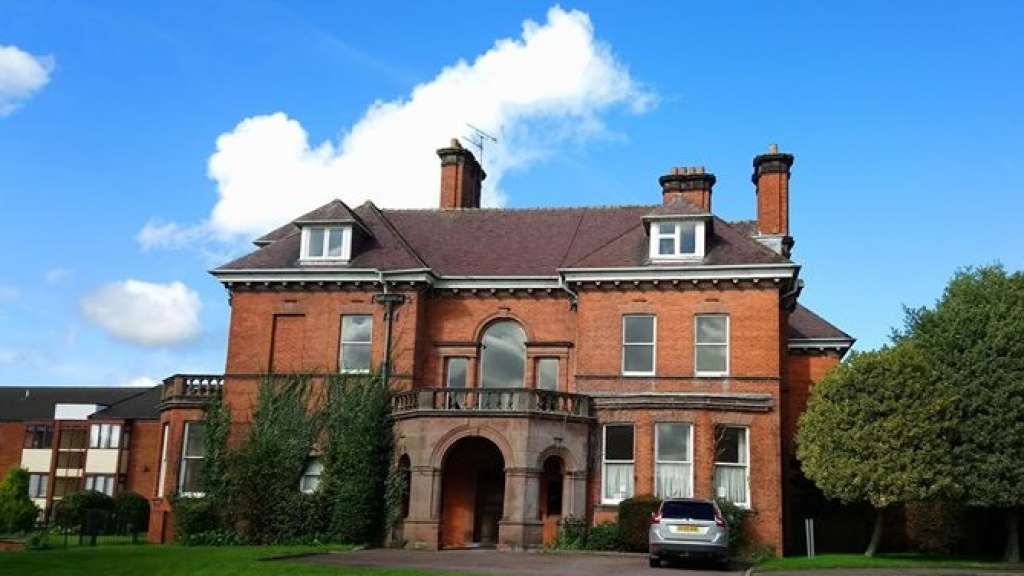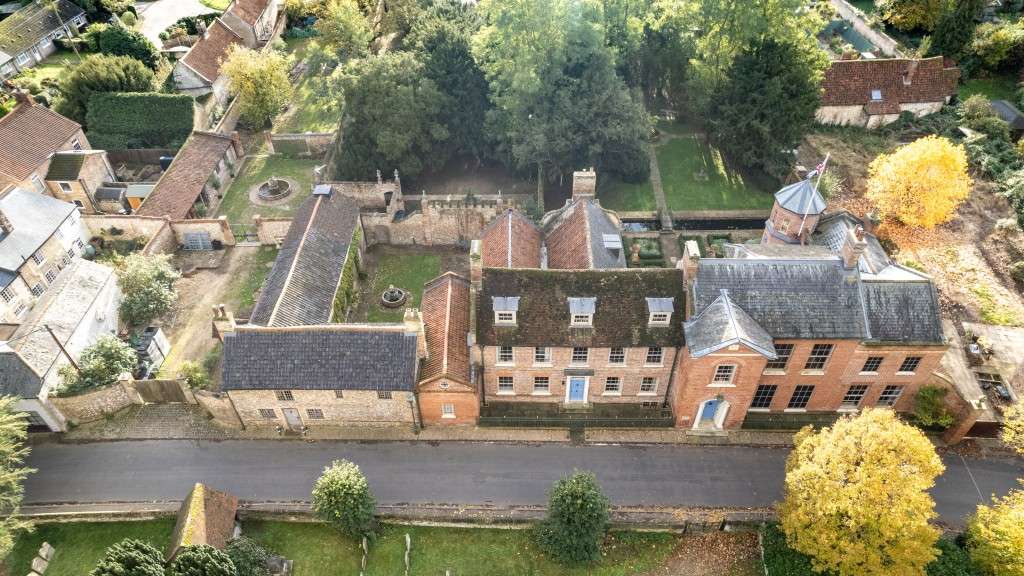BaR News Round-Up December 2024 - "The 12 SAVEs of Christmas"
To mark the end of a year of updates, we take a look at some stories of progress and success in "The 12 SAVEs of Christmas". In doing so, we celebrate the persistence, determination and vision of all those working to save the historic buildings and bring them back into interesting and functional uses.
We would like to thank all those who have given us their time and expertise to keep the register updated and to add new entries during the year. You have helped us update nearly 1,500 individual entries and add just short of 100 new buildings.
1. After multiple attempts, 27 Queen Street, Derby, was recently listed grade II. Though much-altered, this C17th survivor was home to the first Astronomer Royal, John Flamsteed, and later to acclaimed Derby artist, Joseph Wright, who died there. On SAVE's at risk register since 2009 we celebrate the determination of the Derby Civic Society and other local campaigners for securing recognition for this building.
2. Newcastle's grade II* listed Keelmen’s Hospital was built in 1701 as an almshouse for the Tyneside Keelmen who carried coal on flat-bottomed boats known as ‘keels’ to cargo ships, known as ‘colliers’ waiting in deeper water. Disused for many years and on SAVE's at risk register since 2019, it is now set to be converted to 20 small flats for specialist uses such as sheltered housing, specialist care support, and co-housing. The project is led by the Tyne & Wear Building Preservation Trust working with Newcastle City Council with funding from the National Lottery Heritage Fund, Architectural Heritage Fund, Historic England and the Council. You can find out more about the work of the TWBPT by visiting their website.
3. After years of sustained campaigning, the Friends of the Carlisle Victorian and Turkish Baths, are to be given ownership of the baths by the Council to progress their scheme for reuse. First opened in 1884 as public baths and washhouse the delightfully lavish Turkish Baths were added in 1909, a ladies’ waiting room and slipper baths in 1920 with glazed tiling, terrazzo flooring and marble bench tops. On SAVE's register since its closure in 2022, the Friends group spoke at our BaR launch of new entries in June 2022. To find out more: https://carlislebaths.co.uk/
4. The Palace Theatre in Swansea reopened on 7 November 2024. The theatre which dates from 1888 is in terrible condition and had been on SAVE's register since 2012. It has now been converted to use as flexible office space with shared areas and private meeting rooms plus a unique events space and a cafe. Specialist office serviecs and start-up support are also provided and it is run by a company called Tramshed Tech more detail is to be found on Swansea Council's website. The scheme preserves the original theatre balconies and the stage area which can be used for events. The project has been supported by the Council and the Welsh Government through the Transforming Towns programme as part of other Swansea city centre projects as well as by the Theatres Trust.
5. The Paignton Picture Palace, Torbay is a grade II* Edwardian cinema with a glamorous past which has been on our register since 2008. In 2020 we reported that the cinema, closed since 1999, had been taken on by the Paignton Picture House Trust who developed plans for a community cinema and hub with learning partnerships with local Higher Education institutions. The trust has had support from the Architectural Heritage Fund, the Arts Council and the Council, with a reported £3m from the government's Cultural Development Fund and £1.25m from the Future High Streets fund. Planning permission and listed building consent were obtained in 2023 for conversion of the interior including an extension housing lifts and stairs. The Trust is still fundraising for the full £9m project cost and had hoped that work would begin in the Autumn of 2024 with completion projected for 2026. More information about the project is on their website.
6. The Towers Arms near Brentwood, Essex was originally built for a local wealthy family in 1704 according to the date stone. It became a pub called the Towers Arms Inn in the early 20th century but closed shortly before we added it to our register in 2017. Consent was granted in 2022 for alterations and in August this year, the Towers Arms opened its doors again as a Japanese restaurant called “Saints at the Tower Arms”.
7. Pauls Moss in Whitchurch, Shropshire was built in 1894/5 for distinguished local figure and benefactor EP Thompson from a wealthy Liverpool family of bankers. It was later converted to council offices and then flats. Unlisted but in a conservation area, it avoided demolition (which SAVE and other local groups opposed) when a new development of independent living accommodation and health facilities was adapted to incorporate the house. Work is due to complete shortly.
8. West Haven Maltings was Grimsby’s early port before the dock extensions were created to the north from 1800 onwards. The Maltings and adjoining warehouses are late 18th century and are near the centre of the town. SAVE has followed the story of these buildings since 2003 and was delighted to hear that, following acquisition of the buildings by North East Lincolnshire Council in 2020, a scheme to convert it to use as a centre to support local young people was developed to be called the Horizon Youth Zone. With support from the council and other funds, the project will provide young people “with a safe space where they can develop important life skills, gain confidence and have opportunities to try out new activities" which will be open 7 days a week. The centre is due to open in 2025 and is currently fundraising for its operating costs.
9. The grade II* Winter Gardens in Great Yarmouth was built between 1878 and 1881 not for the town but rather for Torquay, only later being relocated to the seafront in 1904. Since then it has been used for concerts, dancing and skating –the 1909 maple flooring of the roller skating rink survives. After closure, concerns increased about its condition and we added to our register in 2019. The Council have since led a project to restore and reopen it with £10m in lottery funding. In September 2024 the project won the prize for ‘future reuse’ at the Architects’ Journal Retrofit & Reuse Awards last month. The site is due to reopen to the public in 2027, almost twenty years after its closure in 2008.
10. Capel Salem, Pwllheli, Gwynedd is a grand, grade II listed 19th-century chapel which closed in 2008 and was for sale when we first put it on the register in 2010. It was built in 1862 and remodelled and enlarged in 1893. With a dramatic façade and a fine interior, it had been on and off the market until we noted in 2023 that the building had sold and an application for change of use to a pottery studio and living accommodation together with space for community events had been approved in September 2023. Excitingly, everyone can follow this fantastic story by watching Channel 4’s "Our Welsh Chapel Dream". Keith Brymer Jones (of the Great Pottery Throw Down) and his partner, Marj, have come up with the vision for restoring and bringing back the chapel into use with heart and determination.
11. High Smithy Holme, Muker, Richmond is located in Swaledale in the Yorkshire Dales National Park. This early eighteenth century grade II listed farmhouse and byre is a beautiful but, until recently ruinous, house which belonged to Anthony Clarkson, a local man who prepared all the tithe maps for Swaledale. For a long time, we were wondering what was happening in this remote corner of the National Park until we noticed a recent Channel 4 series "Our Farm Next Door". In highly recommended viewing, you can watch this building and the attached barn being restored by a farming family from the farm next door, themselves already well-known TV personalities having featured in an earlier series about their life on a Dales sheep farm. Work is still on-going but one could hardly imagine better new owners, with deep connections to and interest in the land and its farming history and this building. A second series due next year will hopefully show further progress.
12. Northwold Manor, Norfolk featured in SAVE’s 2010 Buildings at Risk Catalogue “Live or Let Die”, the cover of which pictured its handsome but clearly neglected front doorway. A new book tells the story of how it has been saved and sensitively restored in fascinating detail. The book has been written by the saviour of the building himself, Warwick Rodwell, who, together with his wife, Diane Gibbs, spent 10 years completing the project. With an incredible range of images recording the process from the very beginning, this is a compelling and personal story. Now complete, Northwold Manor has become not just a beautifully restored house but one invested with a new and vital spirit. An article by Professor Rodwell is appearing in our Winter 2024 newsletter.












